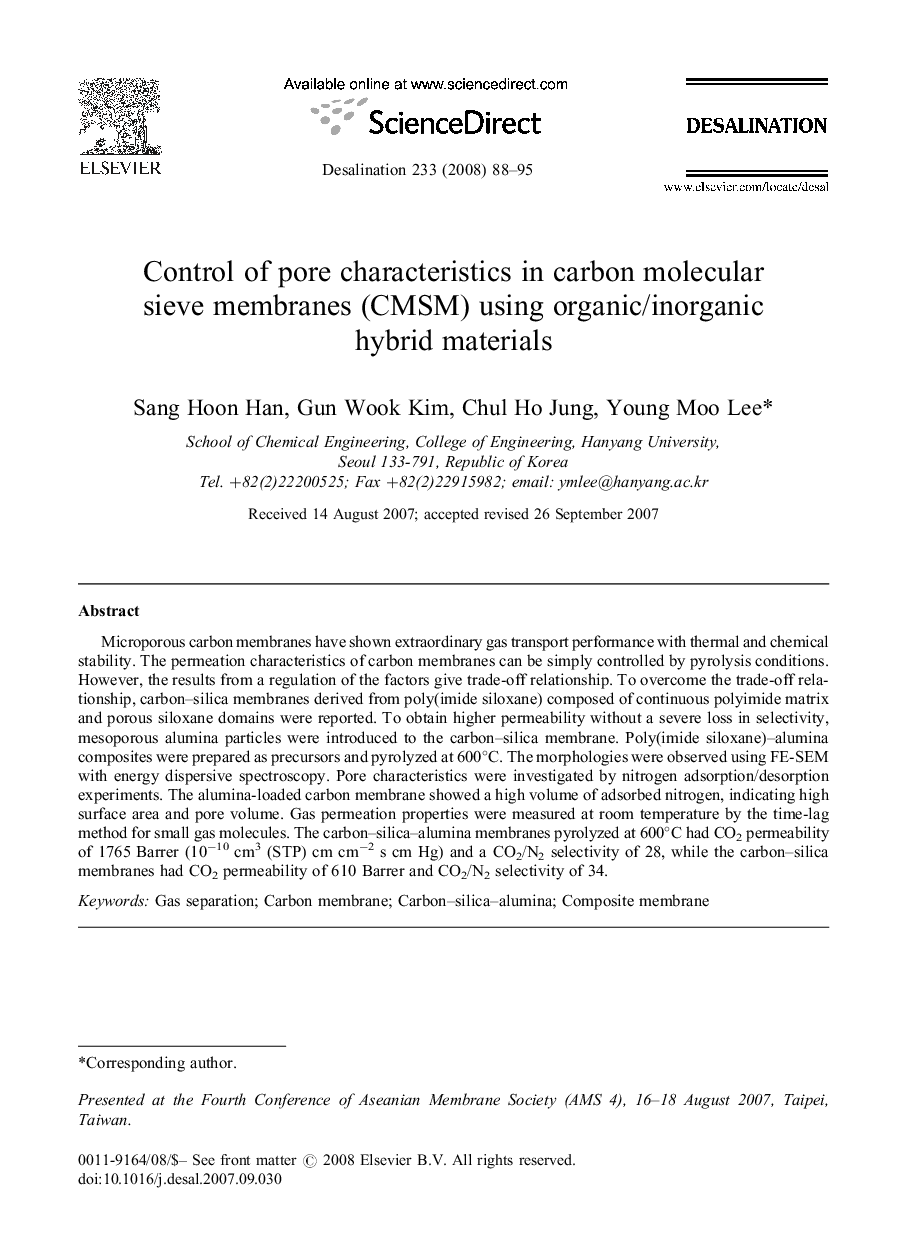| Article ID | Journal | Published Year | Pages | File Type |
|---|---|---|---|---|
| 627137 | Desalination | 2008 | 8 Pages |
Microporous carbon membranes have shown extraordinary gas transport performance with thermal and chemical stability. The permeation characteristics of carbon membranes can be simply controlled by pyrolysis conditions. However, the results from a regulation of the factors give trade-off relationship. To overcome the trade-off relationship, carbon–silica membranes derived from poly(imide siloxane) composed of continuous polyimide matrix and porous siloxane domains were reported. To obtain higher permeability without a severe loss in selectivity, mesoporous alumina particles were introduced to the carbon–silica membrane. Poly(imide siloxane)–alumina composites were prepared as precursors and pyrolyzed at 600°C. The morphologies were observed using FE-SEM with energy dispersive spectroscopy. Pore characteristics were investigated by nitrogen adsorption/desorption experiments. The alumina-loaded carbon membrane showed a high volume of adsorbed nitrogen, indicating high surface area and pore volume. Gas permeation properties were measured at room temperature by the time-lag method for small gas molecules. The carbon–silica–alumina membranes pyrolyzed at 600°C had CO2 permeability of 1765 Barrer (10−10 cm3 (STP) cm cm−2 s cm Hg) and a CO2/N2 selectivity of 28, while the carbon–silica membranes had CO2 permeability of 610 Barrer and CO2/N2 selectivity of 34.
